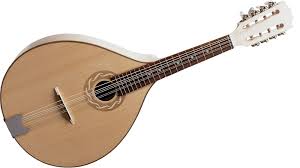Recent Posts
Search Topic

African Mandole is a plucked steel-string fretted musical instrument of Algerian origin. It is mainly used in Chaabi music and Kabyle music. The mondol is from North Africa (mainly in Algeria). Got its popularity in 1960. It’s actually a mandocello-sized instrument. Earlier it has also been called a “mandoluth”.
The North African variant was created in 1932 by the Italian luthier Jean Bélido, following recommendations made by Algerian musician El Hadj M’Hamed El Anka. It developed from a large mandola, with 4 double strings, but now it often has 5 courses. Mandole is a French word for mandola. It’s with a guitar-style neck, and raised fingerboard. The old instrument, with medieval origins. The body has always a flat back, never rounded like an oud.
It can have eight, ten, or twelve strings in doubled courses, and may have additional frets between frets to provide quarter tones. The sound hole is typically diamond-shaped, but it is not fixed can be round too, and sometimes covered by a rosette and even multiple rosettes. There is a scratchplate between the soundhole and bridge.
The scale length puts the African mandole in the baritone or bass range of instruments. Tuning of a mondol can be (EE) AA dd gg bb (lower strings of a guitar), or like an oud, or similar to a mando-cello : (DD) GG dd aa e’e’. It is played with a plectrum, to accompany singing.